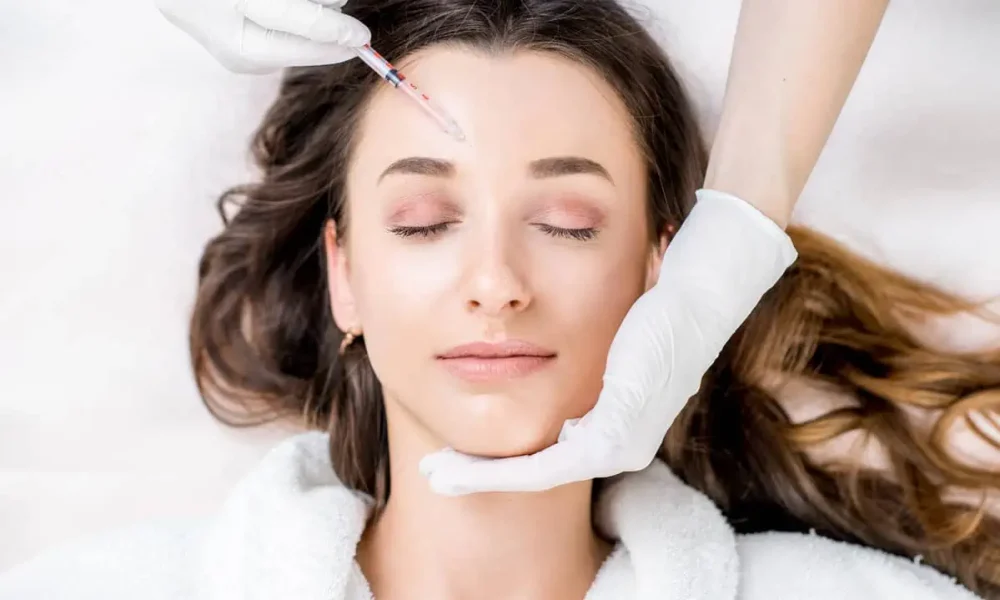Your skin changes as you age. Lines appear, texture shifts, and that firm bounce you once had starts to fade. This happens because collagen production slows down over time.
Collagen stimulators offer a way to work with your body’s natural processes. They encourage your skin to make more collagen rather than just filling in gaps. When you pair these treatments with good nutrition and sun protection, you create a strong plan for healthy skin that lasts.
What Collagen Stimulators Do for Your Skin
Collagen stimulators work differently than standard fillers. They trigger your body to produce new collagen (neocollagenesis) in treated areas. This process takes time but delivers results that look natural and can last up to two years.
These treatments use materials that break down safely in your body. As they dissolve, they prompt cells called fibroblasts to create fresh collagen. The new collagen builds gradually, which means changes appear slowly over several weeks or months. There are a wide variety of collagen stimulators in the market now, including Polycaprolactone (PCL), Poly-L-Lactic Acid (PLLA), Calcium hydroxyapatite (CaHa), Poly-D-L-Lactic Acid (PDLLA), PDO, etc. While each offers different degrees of collagen synthesis in the skin, the effects almost always last longer than HA based options. Improvement to skin quality, texture and tone are often observed.
Most people need a series of sessions spread over a few months. Results improve with each treatment as more collagen forms. This gradual approach helps your skin look refreshed without dramatic overnight changes.
How Nutrition Supports Collagen Production
What you eat affects how well your skin makes collagen. Protein provides the amino acids your body needs to build this vital structure. Foods like fish, eggs, and beans give your skin the raw materials it requires.
Vitamin C plays a key role in collagen formation. Your body cannot make collagen without it. Citrus fruits, peppers, and leafy greens deliver this nutrient in amounts that support skin health.
Antioxidants protect existing collagen from damage. Berries, nuts, and green tea contain compounds that shield your skin from harm. When you eat a varied diet rich in whole foods, you give your skin what it needs to stay strong.
Why SPF Protection Matters Every Day
Sun exposure breaks down collagen faster than almost anything else. UV rays damage the fibres that keep your skin firm and smooth. This damage builds up over years, which is why sun protection matters daily.
SPF 30 or higher blocks most harmful rays when you apply it properly. You need about a teaspoon for your face and neck. Reapply every two hours if you spend time outdoors, even on cloudy days.
Combining collagen stimulators with good sun habits makes sense. There is no point in encouraging new collagen growth if you let UV rays destroy it. Daily SPF use protects both your natural collagen and any new collagen your treatments help create.
Building a Routine That Works Together
Start with clean skin twice daily using a gentle wash. Follow with products that support collagen, like those containing retinoids or peptides. These ingredients work well alongside professional treatments.
Apply your SPF every morning as the final step in your routine. Choose a formula you will actually wear, whether that means a tinted moisturiser or a light lotion. The best sunscreen is the one you use consistently.
Schedule your collagen stimulator sessions based on your provider’s advice. Most treatment plans span several months with sessions spaced weeks apart. Between appointments, stick to your nutrition and SPF habits to support the work these treatments do.
What to Expect from Combined Approaches
Results from collagen stimulators appear gradually over weeks and months. You might notice subtle improvements in skin texture first. Deeper changes in firmness and volume take more time to show.
Good nutrition supports these results from the inside. Your body needs proper fuel to make new collagen effectively. When you eat well, you give your treatments the best chance to work.
Sun protection preserves what you build. Each day you use SPF is a day you prevent collagen breakdown. Over time, this protection adds up to healthier, more resilient skin.
Common Questions About Long-Term Skin Care
Many people wonder how long results last. Collagen stimulators can maintain improvements for 18 to 24 months. After that, you may need maintenance sessions to keep results going.
Some worry about side effects from treatments. Most people experience mild swelling or redness that fades within days. Serious problems are rare when you work with a trained provider.
Others ask if these approaches work for all skin types. Collagen stimulators suit most people, though your provider should assess your individual needs. Good nutrition and SPF benefit everyone regardless of skin type or tone.
Making Changes That Stick
Small, steady habits create lasting results. Start with one change, like adding SPF to your morning routine. Once that feels automatic, add another habit like eating more vitamin C rich foods.
Track your progress with photos taken in similar lighting. Changes happen slowly, so photos help you see improvements you might miss day to day. Take pictures before treatments start and then monthly as you go.
Be patient with the process. Skin health builds over time, not overnight. The choices you make today affect how your skin looks months and years from now.
Moving Forward with Confidence
Collagen stimulators offer real benefits when paired with smart daily habits. They work best as part of a complete approach to skin health. Professional treatments, good nutrition, and sun protection all play important roles.
Your skin deserves care that goes beyond quick fixes. Building collagen takes time, but the results feel worth it. When you commit to habits that support your skin’s natural processes, you invest in health that shows.
Start where you are with the resources you have. You do not need to change everything at once. Pick one area to improve, whether that means scheduling a consultation, upgrading your SPF, or adding more protein to your meals.

